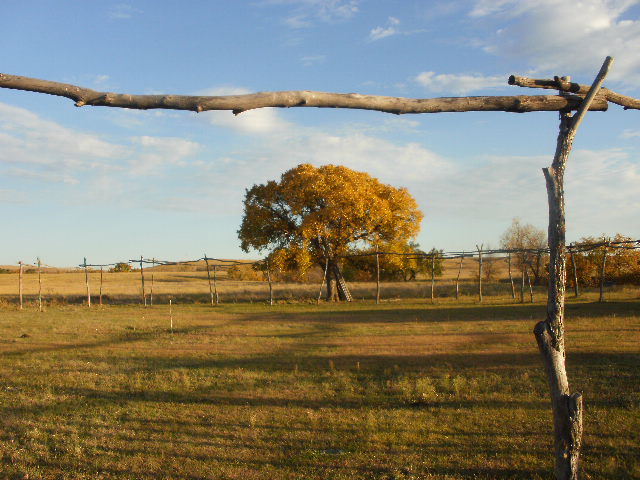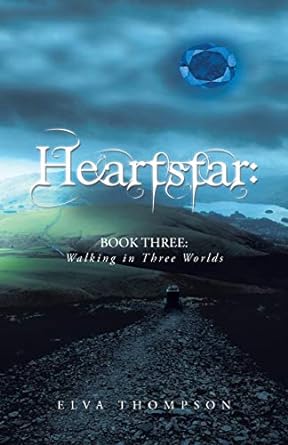
Political Shamanism by Guest Writer Mick Garnett
This article will examine pre-modern shamanic societies, focussing specifically on the South American regions of Guyana and Venezuela. Part of the reason is that shamans and shamanic practices still have an influence on these nations’ politics and societal culture. By the end of the seventeenth century the multiethnic social systems of these countries had been severely disrupted, mainly through indigenous Amerindian populations being decimated by disease and enslavement as a consequence of European colonialisation. Previously, these societies had been run by an internal interethnic hierarchy led by a paramount chief along with a powerful elite of subordinate secondary chiefs. Colonial conquest, and the social disruption it brought, caused a regrouping of the tribal social structures into a less hierarchical and more confederate form. Tribal societies became more varied and flexible in their ethnic membership, with intertribal alliances becoming the norm rather than the exception. Communities were led by charismatic chieftains, rather than high caste political hierarchies. Their power was sustained by their ability to generate a strong personal following (kinfolk, in-laws, allies), their skills and success as regional traders, and their shamanic knowledge and power in the spirit-world. Through the whole Rio Negro region there were as many as 15 such confederacies existing at one time. The expansion and domination of the colonial powers often involved the co-opting and favouring of one tribal group over another. This was a form of ethnic-ranking, and thus the Caribs and Arawaks were favoured over the Makushi, Warao and Yao, creating a system of prejudice and social inequality. With colonisation came a level of integration, both politically and culturally, as European goods were sought after, and valued, over traditional manufactures. Clan identities were held together and consolidated by powerful shaman-chiefs, who carried knowledge of both the cosmos and the ancestral past. They had influence not only over spiritual rituals and beliefs, but also agricultural practices, environmental exploitation and use of forest resources, daily diet and cooking, and accepted social behaviours.
Arawakan Shamans
As with all indigenous cultures, shamanic initiation practices involve periods of sexual abstinence, strict dietary regimes, and a strong mental make-up to endure physical ordeals. These practices elicit special supernatural powers, exhibited in the ability to rapidly memorize numerous songs and prayers, the names and formulas for medicines and poisons, and the psycho-physical capacity to deal with the ingestion of psychotropic substances. Arawak initiation involves 5 levels of knowledge, specialisation and practice that enables the shaman to mediate between the natural and supernatural worlds. These form an ascending hierarchy of power and influence, each encompassing the one below it:
- Biniji – the one who prepares medicines with plants and water.
- Malakana – the blower who cures by means of blowing tobacco smoke.
- Uyukali – who cures by means of suctioning the ill parts of the body.
- Sibunitei – the one who cures by means of divinations and dreams.
- Hniwakali – the one who knows more, or who dreams knowledge.
The holders of the 5th level were the great chiefs, political leaders who organised men in the sacred rituals and festivals, economic activities and commerce, and warfare. Many of the great native leaders of the past were powerful shamans, adept at facing and manipulating the occult world, these qualities being precisely those that supported their regional political power.
The shamanic tradition of healing and prophecy is known as kuwai or ‘the voice of creation’, which first made the world. Kuwai is also envisaged as a monstrous, primordial human being, master of all that is visible and invisible, who controls the sky and the universe through his power and knowledge, and who came to teach people the sacred rites of initiation. The ritual system of Kuwai is divided into mythical cycles, with each containing a corpus of narratives in the form of stories, myths, chants, songs and prayers. Shamanism also maintained the relationship originally established between the inepe miki nawi, or first ancestors, and the pjenawi or living elders. These are living adult individuals who have obtained great wisdom and important historical, mythological, ritual and practical knowledge. Mostly these elder men and women perform shamanic practices in the curing of illnesses and disease, using tobacco and plants as remedies. But on a lower level there are remedies known as pusanas. These are magic potions to obtain the sympathy of people, the love of someone, or to improve hunting or fishing success. But there are also those who are devoted to the use of poisons in order to bring harm to others. These ‘poison-owners’ are men and women who use the traditional botanical knowledge, including songs and prayers, to specifically kill and injure. These are the ones who engage in shamanic warfare, in order to serve the powers of destruction and chaos. The battles between shamans of light and dark are seen to reflect the cosmic conflict inherent at the root of creation.
Stay Tuned…
Heartstar Is A Series Of Four Books… One In Each Direction.
Only You Can Complete The Circle.
Read ‘Book One: The Key Made of Air’ And Begin The Journey.
Read ‘Book Two: The Gates to Pandemonia’
Read ‘Book Three: Walking in Three Worlds’ NOW Available
About the Author
Written by ethompson
Elva Thompson was born in England in 1947 and moved to Rosebud Lakota reservation in 1987. She is the author of the Heartstar Series; Book One: The Key made of Air, Book Two: The Gates to Pandemonia, and Book Three: Walking In Three Worlds. Her other interests include organic gardening, ancient phonetic languages, sonic sound and their application in the healing arts. She is also a medical intuitive and teaches sonic re-patterning using sound, colour, and essential oils. Elva Thompson is on Amazon Author Central @ amazon.com/author/heartstar
6 Responses to Political Shamanism
Leave a Reply Cancel reply
Google Translate
Translate This Page
Search This Site
Printer Friendly
Recent Posts
Recent Comments
- Judy Nimer Muhn on Saving Whales from the Soulless
- Thomas Balistrieri on Patriarchy and the Penis
- Iam on In the Name of God
- ethompson on In the Name of God
- Iam on In the Name of God
Archives
- April 2024
- March 2024
- February 2024
- January 2024
- December 2023
- November 2023
- October 2023
- September 2023
- August 2023
- July 2023
- May 2023
- April 2023
- March 2023
- February 2023
- December 2022
- November 2022
- October 2022
- September 2022
- August 2022
- July 2022
- May 2022
- April 2022
- March 2022
- February 2022
- January 2022
- December 2021
- November 2021
- October 2021
- September 2021
- August 2021
- July 2021
- June 2021
- May 2021
- April 2021
- February 2021
- January 2021
- December 2020
- November 2020
- October 2020
- September 2020
- August 2020
- July 2020
- June 2020
- May 2020
- April 2020
- March 2020
- February 2020
- January 2020
- December 2019
- August 2019
- June 2019
- May 2019
- April 2019
- March 2019
- February 2019
- August 2018
- July 2018
- June 2018
- April 2018
- March 2018
- December 2017
- November 2017
- October 2017
- June 2017
- February 2017
- January 2017
- December 2016
- November 2016
- October 2016
- September 2016
- August 2016
- July 2016
- June 2016
- May 2016
- April 2016
- March 2016
- February 2016
- December 2015
- November 2015
- October 2015
- September 2015
- August 2015
- July 2015
- June 2015
- April 2015
- March 2015
- January 2015
- December 2014
- November 2014
- October 2014
- September 2014
- August 2014
- July 2014
- June 2014
- May 2014
- April 2014
- March 2014
- February 2014
- January 2014
Affiliate Disclosure Statement
Please Note: Some of the links posted on this page may be ‘affiliate links’. If you click on an ‘affiliate link’ and make a purchase, I will receive an affiliate commission. Please know that I only recommend products that I believe will be of value to my readers. I am disclosing this in accordance with the Federal Trade Commission’s 16 CFR, Part 255: ‘Guides Concerning the Use of Endorsements and Testimonials in Advertising.’




Peony
July 12, 2021 at 6:16 amIn Guyana or the three Guyana’s the Arawak/Kalin’a culture is the dominant one. Nowadays the Shaman is the chief of the community, it’s true they heal or poison and I have seen the result, but since and because of that people turned to christianity. One thing that pushed me away here is shamans kill animals in their rites, and flesh eating is encouraged (and before was cannibalism)… By meeting them I can tell they looked more dark than anything. I am not sure the hierarchy still exists though, but they still met from time to time for their duels. The knowledge is passed to a family member most of the time or an apprentice. So it is about power and control. The real healers are not the ones we see.
Thanks Mick for all your articles ♥
Mick
July 12, 2021 at 11:35 amI hoped you’d join on this one, as it’s your territory. A small fish to catch a Peony 🙂
I will add some more below. It’s because I’ve been reading an interesting thesis by Neil Whitehead called: Dark Shamans and Shamanic State Sorcery.
ariel
July 12, 2021 at 7:11 amhttps://www.youtube.com/watch?v=ZjF-kETEbvU
Just in case: Glad you could come out to play.
xxxxxxx
Mick
July 12, 2021 at 11:37 amIf you mention gardens and call me Maud, I will have you, sirrah!
ariel
July 13, 2021 at 6:45 amKomintern the Gorgon, Mord.
xxxxxx
Chris
July 12, 2021 at 7:27 amThanks for that, Mick.